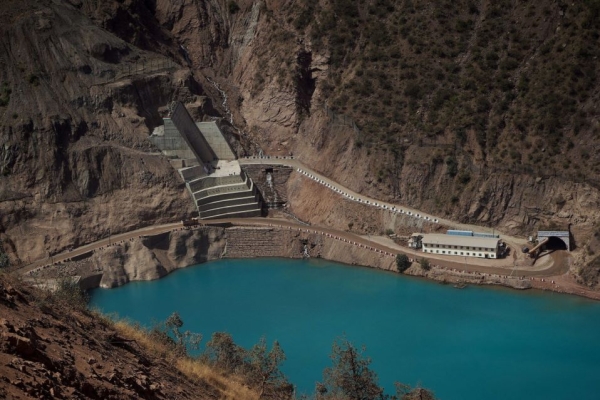Kazakhstan is set to begin importing electricity from Tajikistan, utilizing Uzbekistan’s transit capacity, the Kazakh Ministry of Energy reported. This initiative is part of a broader energy cooperation strategy between the two Central Asian nations.

In 2023, Kazakhstan and Tajikistan signed a memorandum of understanding (MoU) to supply electricity from Tajikistan’s Rogun Hydroelectric Power Plant (HPP) to Kazakhstan from 2023 to 2032. The Rogun HPP, currently under construction on the Vakhsh River in Tajikistan, is the upper stage of the Vakhsh cascade and is slated for completion by 2029 at an estimated cost of $2.2bn.
Kazakhstan’s Minister of Energy, Almassadam Satkaliyev, recently held talks with Tajik government officials, including Deputy Prime Minister Usmonzoda Usmonali and Deputy Minister of Energy and Water Resources Manuchehr Safarzoda, to discuss the technical and commercial parameters of the electricity exports. The success of this project will depend on Uzbekistan’s transit capabilities and the agreed electricity passage regimes.

Uzbekistan has previously expressed interest in the Rogun HPP, considering participation in its construction in 2018, although no final decision was made. In 2022, the Uzbek government indicated its intention to purchase electricity from the Rogun HPP during the summer months.
During the discussions, Minister Satkaliyev highlighted Kazakhstan’s eagerness to cooperate in the electric power sector with Tajikistan, noting the importance of the planned technical evaluations and commercial conditions for the electricity export through Uzbekistan’s networks.
Both parties agreed to explore the possibility of formalizing agreements by October 15, 2024, to regulate unscheduled electricity flows between the energy systems of Central Asian countries, involving relevant organizations in the region.
The Rogun HPP, under construction on the Vakhsh River in Tajikistan, will be the tallest dam globally at 335 meters and the largest hydroelectric facility in Central Asia with a capacity of 3,600 MW. It will be the upper stage of the Vakhsh cascade.




